Unlocking the Power of Transparency:
GreenSync’s Revolutionary Approach to Corruption-Free Infrastructure Procurement.

Brief Background.
The United Nations 2030 Agenda established 17 goals as part of Sustainable Development. Sub-Saharan African countries, South Asian countries, Middle Eastern and North African countries, Latin American countries as well as the Small Island Developing States are facing technical, financial, and political barriers that hinder their ability to make significant progress towards achieving SDG 6 which aims at ensuring availability and sustainable management of water and sanitation for all.
Among these developing countries that are struggling to fulfil this agenda, is South Africa. This country in particular has a stipulated bill of rights which enables everyone with a constitutional right to access to sufficient water. This means that the government is obligated to create policies, allocate resources, and implement programs to ensure that the citizens basic right is progressively realised. This constitution serves to hold the state accountable for failures to provide adequate water and services.
The South African government has made substantial investments into water and sanitation sector, however progress has been slow with evident minimal outputs and improvements in access to the services. One aspect to look at that contributes significantly to the problem is the fraud and collusion in infrastructure project prices which largely affect the vulnerable communities.
Introduction.
If AI can optimize complex industrial systems like supply chain, why aren’t we harnessing that potential to guarantee transparent infrastructure project bidding, what barriers are holding us back?
Collusive and incompetent bidding, as well as lack of transparency for the infrastructure projects in South Africa has translated to a widespread of investment inefficiencies. No one can explain how does an annual investment of $1 billion translates to 0.1 % improved access to water, over four years.
The South African anti-trust body Competition Commission, investigated 140 projects involved in building and expansion of stadiums when the state was facing stress to host the 2010 FIFA World Cup. A total of 15 companies were ordered to pay a combined fine of $140 million (Anon, 2013). It also uncovered 300 cases of collusion after the City of Capetown filed R428 million for civil damage claims in Greenpoint stadium project. The initial project estimation was R2.9 billion and the final paid was R4.5 billion (Capetown, 2016).
Unethical leadership cannot be left out, as the public sector is involved by accepting bribes for the unfair awarding of tenders. The private sector is fixing prices, paying bribes and overcharging the government while not delivering value for money projects (Liphoko, 2015).
Recently, residents in townships under the City of Johannesburg municipality have faced severe water shortages. They are forced to line up in the streets at least three times a week to buy water at R25 per 5 liters (approximately $1.41 per 1.3 gallons). In a country where 33.5% of the population is unemployed (Magome, 2024), this is a significant burden.
The Probem
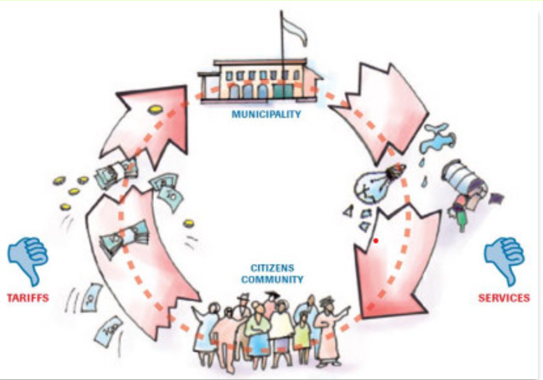
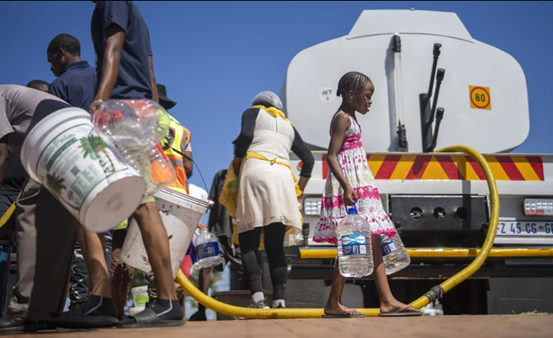
The South African government is facing a critical challenge in the water and sanitation sector, where huge investments are translating to insignificantly small improvements. Despite the availability of substantial financial resources, there has been a lack of progressive outcomes in improving access to these essential services. The reasons deeply ingrained in the current system, such as
Collusive bidding: contractors are engaging in price fixing inflating, inflating project costs and compromising the quality of work which drains public funds. People are taxed to fund projects that do not even meet their needs.
Underspending and Fiscal Dumping: unspent funds are hastily used without proper oversight or strategic planning, which undermines the effectiveness of investments, often resulting in low-quality or incomplete projects.
Overspending and Fund Diversion: overspending due to poor project management and inflated cost collusive project bidding leads to exceeded budgets. Funds initially allocated for essential services such as education, are drained, depriving other sectors of much needed resources.
Fragmented and Incoherent Data: there are various sources of data ranging from procurement records to completion reports, however it is often fragmented and lacks coherence which is difficult to form a comprehensive story. As a result, it becomes challenging to hold responsible parties accountable for their actions.
Green.Sync Solution
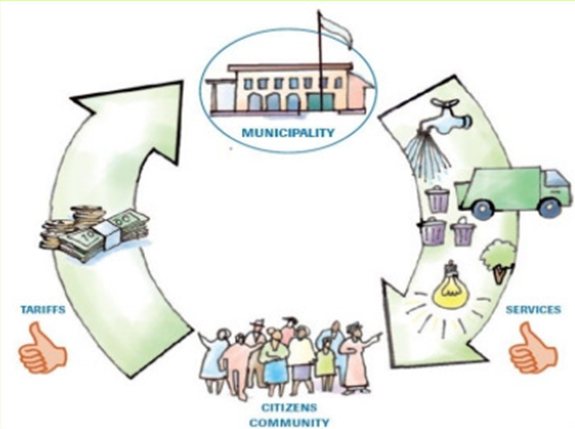
The proposed solution aims to address the inefficiencies and corruption plaguing South Africa’s water and sanitation infrastructure projects by harnessing Artificial Intelligence (AI) and Machine Learning (ML) potential to achieve the following:
Optimizing Procurement Processes: AI and ML employed to analyse procurement data, identify patterns of collusive bidding, and flag potential instances of price-fixing or unethical practices. This would ensure that bids are competitive and that projects are awarded to contractors who provide the best value for money.
Enhancing Transparency and Accountability: Integration of AI-driven tools can help create a more transparent procurement and project management process. By aggregating and analysing data from various sources, these tools can generate coherent, actionable insights that make it easier to monitor project progress, detect inefficiencies, and hold responsible parties accountable for any misconduct or mismanagement.
Preventing Fiscal Dumping and Overspending: improved budget management by predicting spending needs, ensuring that funds are used efficiently throughout the fiscal year, and preventing the rush to spend at year-end that leads to fiscal dumping. Additionally, AI can help prevent overspending by continuously monitoring project costs and flagging deviations from the budget, thereby reducing the need to divert funds from other essential services.
Integrating Fragmented Data: The solution proposes the use of AI to integrate and analyse fragmented data from various sources. This would enable a comprehensive view of infrastructure projects, allowing for better planning, forecasting, and decision-making. A coherent data narrative would also facilitate long-term impact assessments and ensure that infrastructure investments align with sustainable development goals.
Improving Project Management and Outcomes: AI and ML can optimize project timelines, resource allocation, and risk management, leading to more efficient project execution. By automating routine tasks and providing data-driven recommendations, AI can help project managers make informed decisions that improve the overall quality and timeliness of infrastructure development.
What does the website offer:Predictive modelling. This means that prices for projects can be estimated by our system using the benchmarked data prices. Hence every bidder falls under the criteria
Technicality of how the Green.Sync solution works:
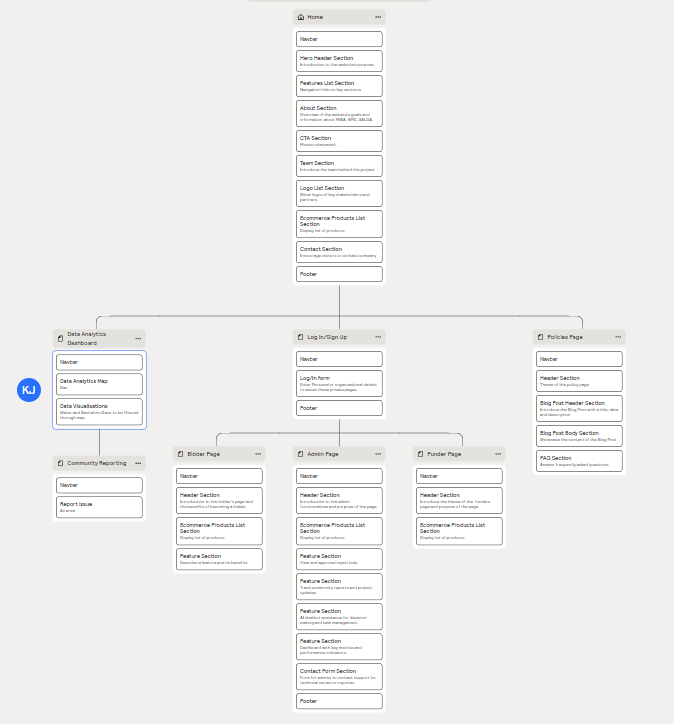
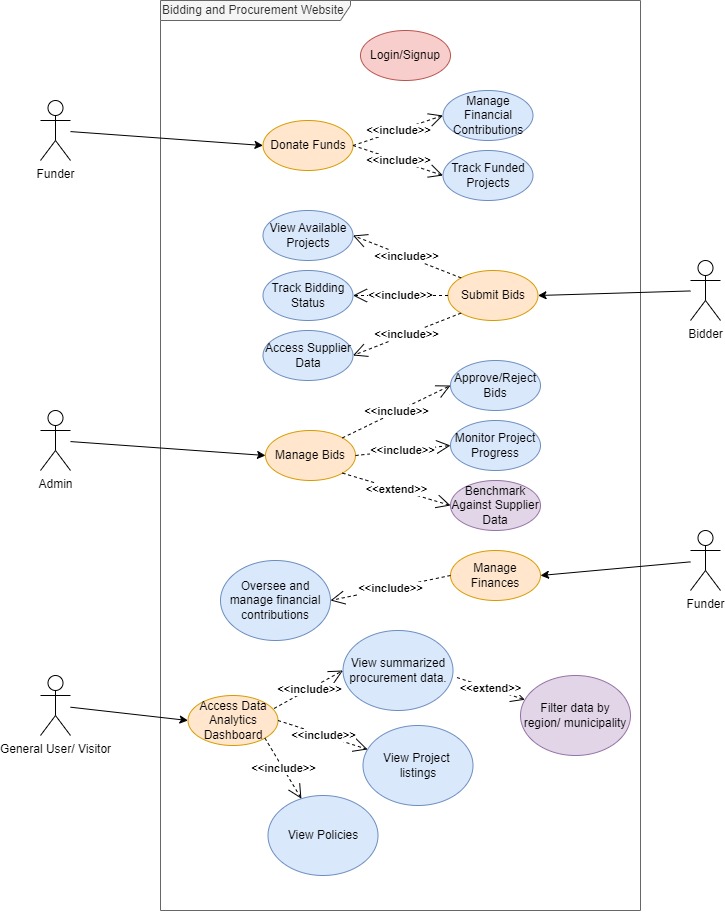
Our website is engineered to transform the management of water and sanitation infrastructure projects, with a focus on South Africa. At its core, the platform places users at the center of the experience, supporting distinct roles such as bidders, funders, administrators, and community members to ensure a comprehensive approach to project management.
For Bidders, the website provides a streamlined interface to view and bid on infrastructure projects. Bidders can access detailed project information, submit proposals, and track their bid status. The integration of an AI chatbot offers real-time recommendations and benchmarks, helping bidders craft competitive proposals based on historical data and current market trends.
For Funders, the platform simplifies financial management and donation processes. Funders can log in, review project needs, and allocate resources effectively. They have access to advanced financial tools and reporting features that track how their funds are being used, ensuring transparency and accountability.
For Administrators, the website offers robust management tools. Administrators can review and approve or reject bids based on predefined criteria. They also track project progress in real-time, leveraging the AI chatbot for insights and recommendations. This role is crucial in ensuring that projects are executed efficiently and transparently, minimizing the risk of corruption.
For Community Members, the Community Reporting feature allows residents to report infrastructure issues such as leaks or faults directly through the website. This feature is designed to quickly flag problems and ensure they are addressed by relevant authorities, promoting a collaborative approach between the community and officials.
Transparency is a cornerstone of our platform. The publicly accessible Data Analytics Dashboard allows anyone to explore procurement data, view project progress, and analyze key metrics by region. This transparency empowers communities and stakeholders by providing a clear view of fund allocation and project outcomes.
By integrating these features, our website not only enhances the efficiency and sustainability of infrastructure projects but also fosters ethical practices, accountability, and community engagement. This comprehensive approach addresses the complex challenges of managing water and sanitation infrastructure, aligning with our goal of promoting sustainable development and improving quality of life.
Revenue Generation and Commercialization Strategy
To generate revenue and commercialize the website, we can leverage the partnerships with MISA, WRC, SALGA, and the involvement of DTU SKYLAB. Here’s a proposed strategy:
Subscription-Based Access:
The core revenue stream could be a subscription model for different user roles, particularly for bidders and funders. Bidders might pay for premium access to detailed project information, cost benchmarking data, and advanced AI tools that help optimize their bids. Funders could subscribe for enhanced financial management tools, including access to detailed project tracking and financial analytics.
Data Analytics and Insights:
Another revenue stream could come from offering advanced data analytics and insights as a paid service. Municipalities, NGOs, and private sector stakeholders could pay for access to detailed procurement analytics, trend reports, and predictive models that assist in decision-making. This can also include selling anonymized and aggregated data to researchers or institutions interested in studying trends in public infrastructure projects.
White-Label Solutions for Other Regions:
The platform can be commercialized by offering it as a white-label solution to other regions or countries facing similar challenges. By customizing the platform for different geographies, we can scale the solution and generate licensing fees from government agencies or international organizations looking to implement similar systems.
Corporate Sponsorships and Partnerships:
Engaging with corporate sponsors or forming partnerships with companies that align with the mission of improving water and sanitation infrastructure could be another revenue stream. These companies could pay for advertising or branding opportunities on the platform, particularly within the Data Analytics Dashboard or Community Reporting sections.
Freemium Model:
A freemium model could be introduced where basic access to the platform is free, but advanced features and tools (like detailed data analytics, AI recommendations, and financial management tools) are behind a paywall. This approach can attract a broader user base while converting some users to paid subscribers.
Commercialization Through Stakeholder Collaboration:
Given the shared ownership of the idea, commercialization can be done in collaboration with MISA, WRC, SALGA, and other stakeholders. Joint ventures could be formed to deploy the solution at a larger scale, where the revenue is shared among the partners based on predefined agreements. This could also include seeking grants or funding from international bodies interested in sustainable development projects.
By focusing on these strategies, the website can not only sustain itself financially but also scale and make a significant impact in improving infrastructure management in South Africa and beyond.
How the Greensync solution address the sustainable development goals:

SDG 6: By enhancing the efficiency and sustainability of water and sanitation infrastructure, Green Sync directly contributes to improving access to clean water and sanitation, managing water resources more effectively, and reducing pollution.
SDG 9: The solution leverages AI and ML to innovate infrastructure management, ensuring that investments in water and sanitation are sustainable, resilient, and environmentally sound.
SDG 11: Green Sync supports the development of sustainable cities by improving access to essential services like water and sanitation, reducing environmental impact, and promoting sustainable urban development.
SDG 12: Through efficient resource management and the reduction of waste in the procurement and operational processes, Green Sync aligns with responsible consumption and production goals.
SDG 16: The focus on transparency, anti-corruption, and accountable institutions ensures that the solution supports the creation of fair and just infrastructure development processes.
SDG 17: Green Sync fosters collaboration between various stakeholders, including governments, NGOs, and the private sector, to achieve sustainable development outcomes through shared knowledge and resources.
Value Proposition
The greensync solution creates value by aligning transparency, accurate cost estimation, efficient financial management, real time monitoring, competitive bidding, enhanced security and to deliver a robust, transparent and efficient solution for ecosystem and infrastructure procurement project bidding.
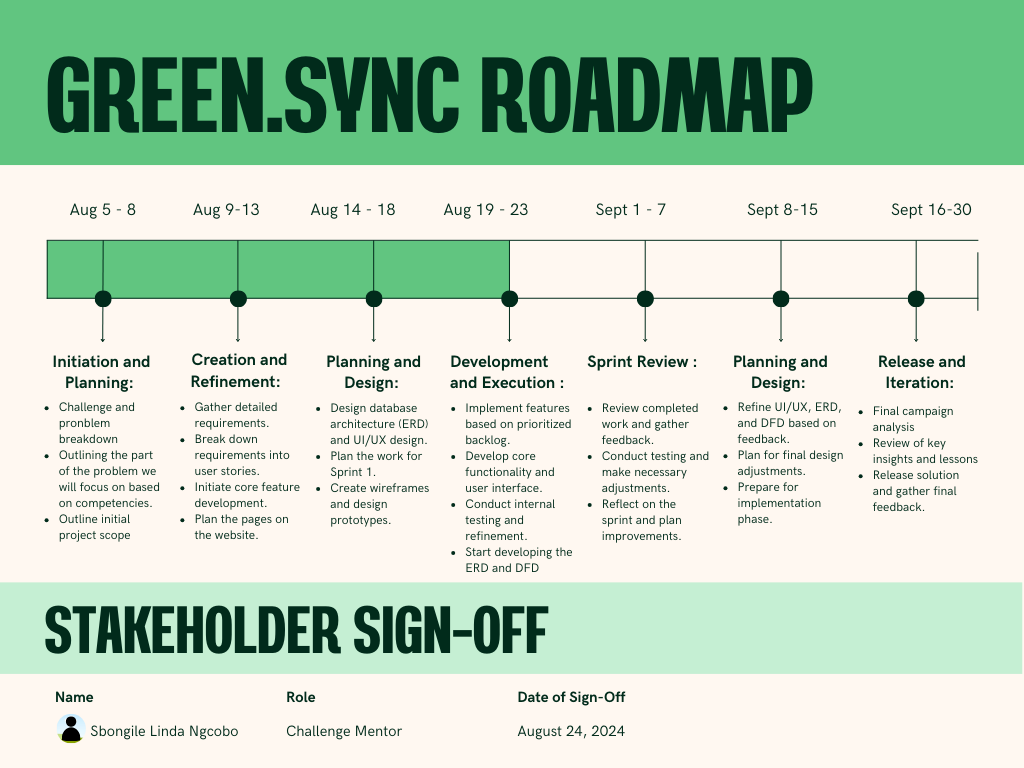

Join the Greensync Solution.
Together we can sync our effort to achieve transparency that would make every South African rand count. You and I can harness the power of Digital Technologies to make investments in infrastructure, efficient. The team:
